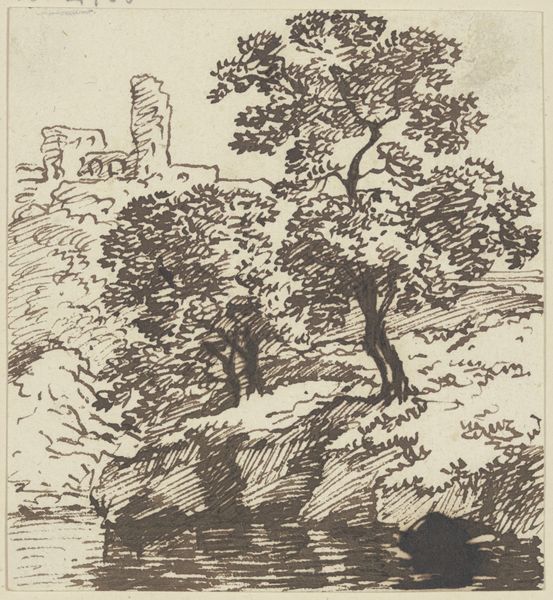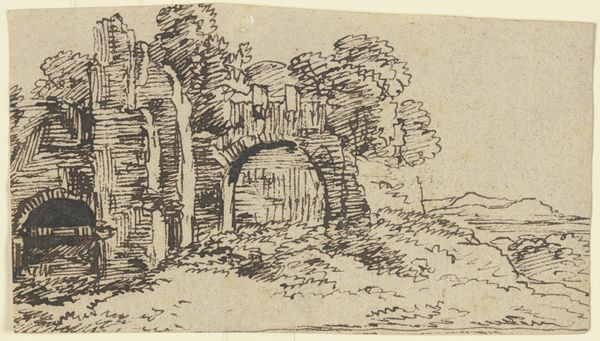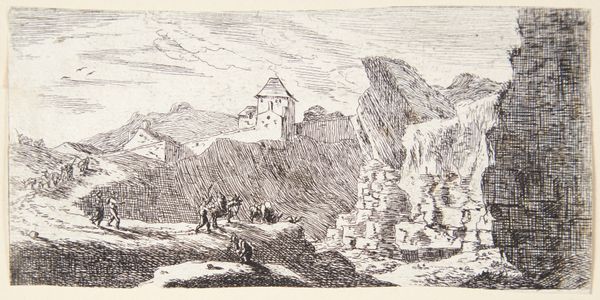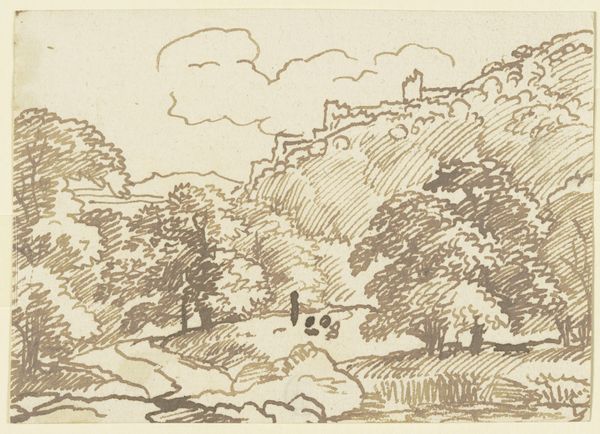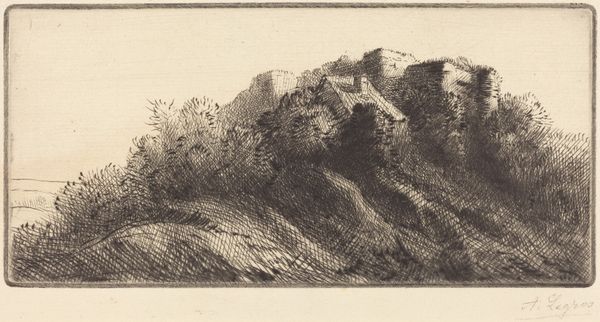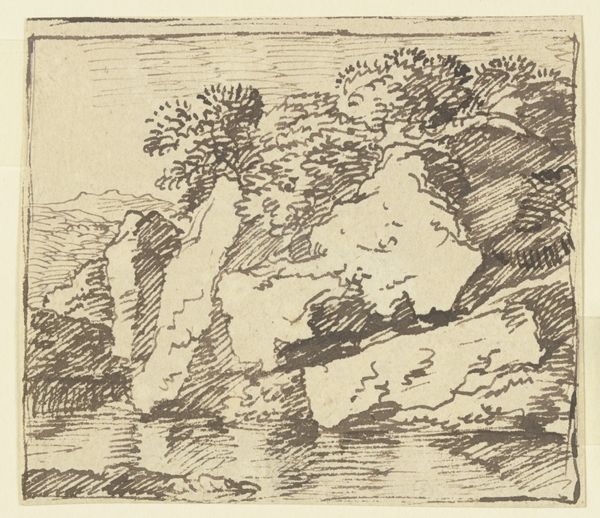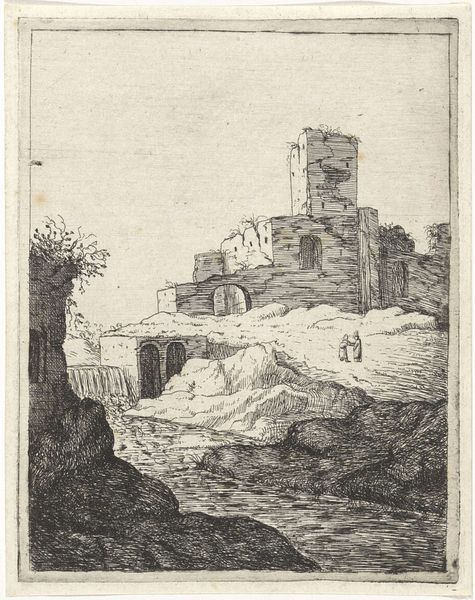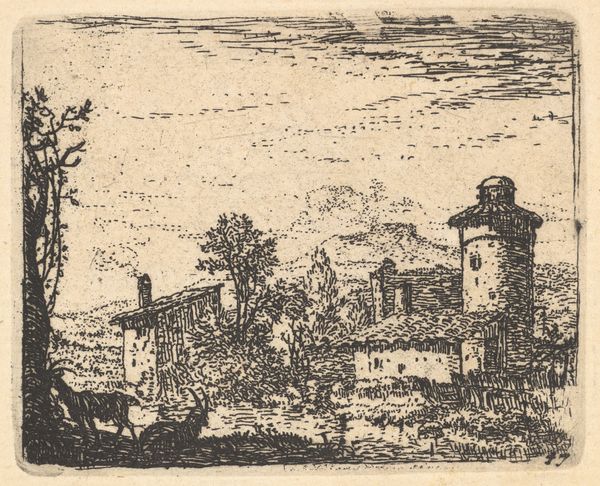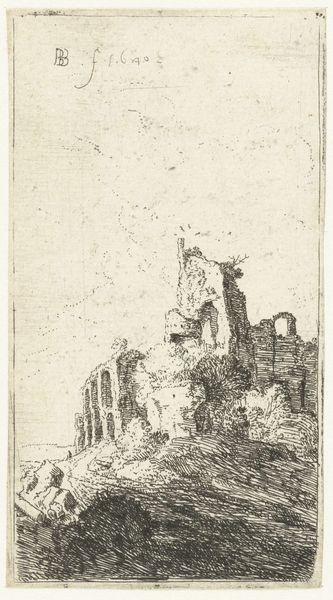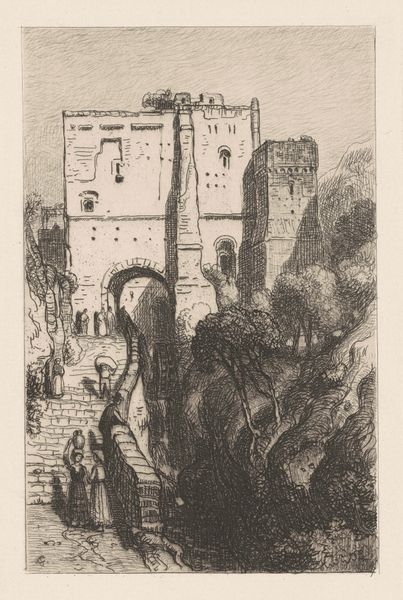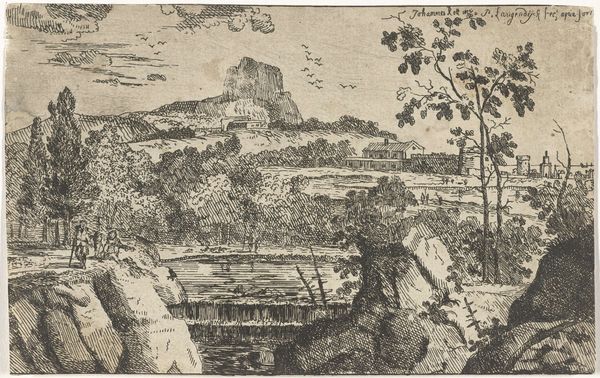
drawing, ink, indian-ink, architecture
#
landscape illustration sketch
#
drawing
#
pen drawing
#
mechanical pen drawing
#
pen illustration
#
pen sketch
#
landscape
#
personal sketchbook
#
ink
#
german
#
sketch
#
indian-ink
#
romanticism
#
pen-ink sketch
#
15_18th-century
#
pen work
#
sketchbook drawing
#
sketchbook art
#
architecture
Copyright: Public Domain
Curator: This drawing, held here at the Städel Museum, is titled "Castle ruins by a body of water" by Franz Kobell. It appears to be an ink sketch, evocative in its simplicity. What is your initial take? Editor: Stark. The sharp contrast of light and shadow gives it a dramatic feel, almost theatrical. Notice the bold, confident lines defining the castle and the softer, more tentative strokes used for the water. Curator: Yes, and I think this is an interesting example of how ruins become imbued with meaning. They signify not just physical decay but also shifts in power, changes in cultural values, and the impermanence of human structures when set against the natural landscape. The way Kobell uses pen and ink really lends itself to exploring these themes of history and time, doesn't it? Editor: Absolutely. The density of the lines creates a texture that is so compelling—especially when one considers the function of architecture versus the ephemerality of a sketch. The visible strokes themselves add another layer, reminding us of the artist's hand, of the creative process itself. Curator: Precisely! Think about the concept of "ruin value" that was circulating during this era and the birth of romanticism. It reframes decay, allowing for an almost aesthetic appreciation. This piece isn’t just documentation, it is a construction of how we choose to remember and value. Editor: Interesting. I see that layering echoed formally in how Kobell stacks line upon line to create mass. The strategic use of hatching and cross-hatching builds volume and also introduces an intriguing spatial ambiguity—a dance of clarity and blurriness. Curator: It is quite stunning when thinking about cultural commentary. One might observe that it captures not just a physical structure in decline but a whole order fading. And beyond aesthetics, Kobell gestures toward complex dialogues on identity and collective memory. Editor: Agreed. Viewing the work through that lends the image a kind of elegiac grandeur. Ultimately, I appreciate Kobell's keen understanding of how light and shadow can articulate the poignant beauty of structures as they crumble.
Comments
No comments
Be the first to comment and join the conversation on the ultimate creative platform.

